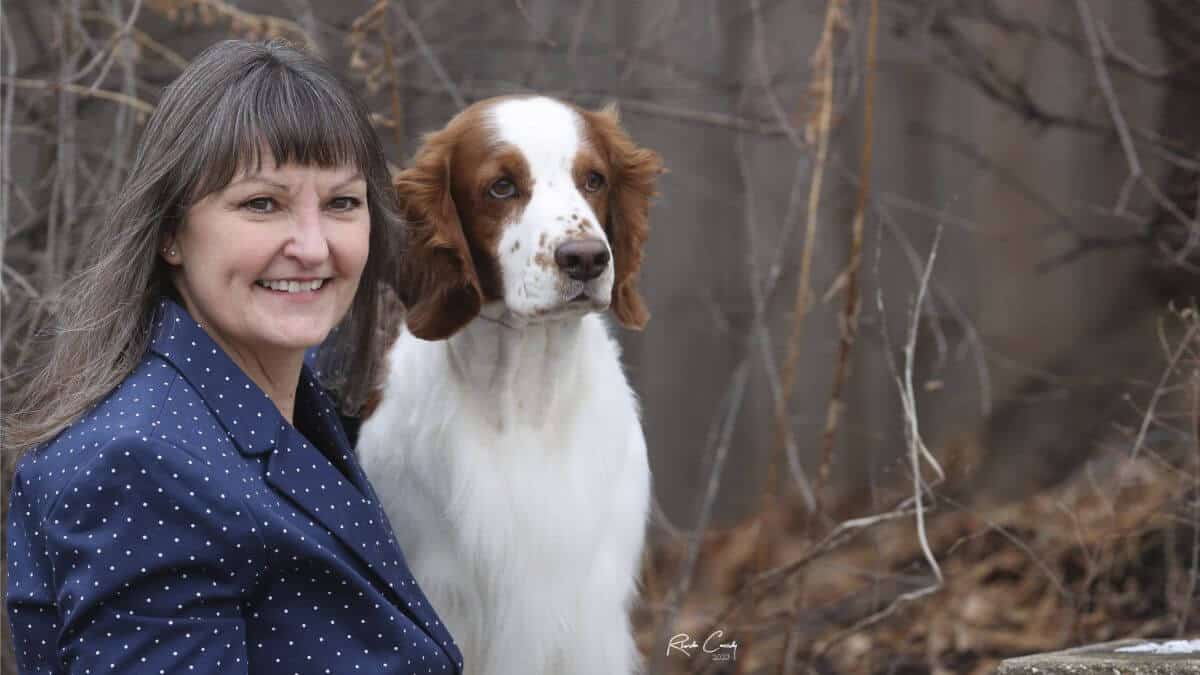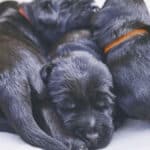Interview with Sharon Sherwood, Breeder of Painted Sky Farms Welsh Springer Spaniels
- Please tell us a little bit about yourself. Where do you live? How many years in dogs? How many years as a breeder? What is your kennel name?
- What is your “process” for selecting show puppies? Performance puppies?
- In your opinion, is your breed in good condition overall? Any trends that warrant concern?
- As a Preservation Breeder, can you share your thoughts on the sport today? How’s the judging these days? What do you think about the number of shows?
- In your opinion, is social media good for the sport? Is it harmful?
- What are the biggest challenges facing the dog show community as a whole today and how can these be addressed?
- What are some of the positive changes you’ve seen in the sport over the past decade?
1. My name is Sharon Sherwood and I live in Greeley, Colorado, with my husband, David, and our animals. We’ve always owned dogs, but we’ve been IN dogs, and the sport of purebred dogs, for just over 30 years. We started in Golden Retrievers but found our passion in Welsh Springer Spaniels 12 years ago. Our kennel name, Painted Sky Farms, comes from the stunning sunrises and sunsets we have here.
2. While we still like to get together with like-minded breeders to stack, go over, and watch puppies move, we have often made up our minds weeks prior on what we are keeping, or on deciding which may be show dogs. When a litter lives in the middle of everything in your life, and you study, watch, and interact with them for eight-plus weeks, a good breeder should have a keen enough eye to know what’s rising to the top. As for performance puppies, while I think any and all could be such, the puppies that study things—figure things out quickly—those are my picks, with the caveat that they also might be strong-minded and harder to train. It’s a trade-off, but it often pays off.
3. I would say fair. I’ve heard someone say, “If it looks like a Welsh, it’s a Welsh,’’ but what does that do for maintaining breed type? We’re seeing less leg in the breed, giving them a low and long profile. We still see toplines that are less than desirable, which, in my opinion, leads to dogs that have less than desirable movement. These are still hunting dogs, and they should be able to move like they could do their job effortlessly all day. They also should not be dripping in coat that is so long it has to be severely trimmed up. It may be pretty, but it’s not correct.
4. The sport of Conformation is a bit of a mixed bag these days. We seem to have plenty of shows to choose from, though for some of us, that means six months of the year we’re traveling great distances to get to them, but we’re also seeing the same group of judges over and over. When looking at shows back East, there are many judges being used who we simply never see out West. Is it that they are not being asked to judge by clubs or is there something else at work? I know that AKC relaxed its rules for where judges accepted judging assignments during COVID, as it was simply hard to get the numbers of judges needed, but has that become the new norm? It’s GREAT if these judges choose your dog, as you can go to them multiple times, but what if they don’t? I guess one just travels farther and farther to find new judges to show to. I still believe, overall, judges in our sport do a great job, and in areas where the competition is tough it’s no easy task!
5. It’s the good, the bad, and the ugly. Good for seeing everyone’s successes, as nothing makes me happier than having to type “CONGRATULATIONS” over and over after a weekend. It’s also good to see that several of the superintendents are utilizing it and making announcements via social media. Bad because I think we all want to stack up to what’s out there showing, or if you are like me, sad when you’re not at shows showing too, and just plain ugly when people become keyboard warriors and say mean or hurtful things about fellow competitors, their dogs, the judging, the venue, etc. There are some who need to just think twice before hitting send.
6. I think the biggest challenge is that our pool of exceptional judges is getting smaller and smaller, and while we do have new judges, it’s that level of knowledge, of seeing hundreds of the same breed, that’s also getting smaller. I don’t have a good solution other than I hope that the great judges we have currently help those who are new to the sport—lend their expertise, their wisdom, so they too can become a great judge.
7. Matches seem to be making a comeback, which is good for all of us. There also seems to be something for everyone, from Scent Work to Fit Dog, so even those who are not interested in Conformation can do fun things with the dogs—and that’s always a good thing! The other very positive aspect is the ability to gain points on a Reserve at a National Specialty, etc. For those of us in a breed with low entries, that’s very much appreciated.








